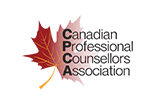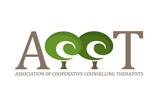
Cognitive Behavioral Therapy (CBT) is an umbrella term for many techniques that are effective across a range of emotional and mental health problems. It identifies and works to attain specific goals within a limited time frame, which can help clients address negative thought patterns and behaviour. There are economic benefits to CBT as well. One study on depression found that the financial cost of 20 CBT sessions was 30% less than addressing the same issue using antidepressants (Chodos, 2017).
CBT is empirically supported, meaning that there is research-based, scientific evidence that the technique works. Read on to learn more about this technique, how it is administered, and its effects.
How CBT Made its way into Counselling Therapist Courses
In counselling therapist school CBT is taught to help students learn how to provide effective counselling to their future clients. CBT emerged in the 1950s and 1960s, with American psychiatrist Aaron T. Beck coining the term “automatic thoughts” to refer to the thoughts people have that are emotional and respond to a trigger. He focused on challenging negative thoughts in clients to create positive change.
The method underwent multiple waves of revisions, with the first wave occurring in the 1950s and 1960s and focusing on classical conditioning, where a potent stimulus is paired with an associated stimulus. An example of this could be a smoker who would like to quit, but always craves a cigarette after their coffee. By changing their routine to go for a walk instead, they break the association they have with the stimulus and increase their chances of success. The second wave of CBT throughout the 1970s looked at information processing and cognitive distortions. Starting in the 1980s, Third Wave CBT emerged, which builds on the first two waves using contextual and experiential change strategies. Today, CBT is continuing to evolve as research and techniques improve.
Techniques Used in Cognitive Behavioral Therapy
CBT uses various methods to change behavior in a range of clients. Cognitive restructuring techniques identify thoughts that cause negative moods and behavior that isn’t useful. Recording and tracking dysfunctional thoughts is the most common way to evaluate them. These thoughts may be ruminations, stress-producing thoughts, and reactions to triggers. With these thoughts recorded, they can then be examined for what is and isn’t true about them, after which alternative, more balanced thoughts can replace them.
Exposure is another technique used in CBT, which helps clients master feared situations through confrontation. For example, someone with social anxiety may benefit from gradually engaging in more and more social activities. This has some of the most positive results of all psychological approaches, with 90% of people still experiencing significant reduction of fear 4 years after receiving care for some phobias (Kaplan and Tolin, 2011).
Mindfulness is also an important component of CBT. It is a technique borrowed from Buddhism, and is used to direct a client’s attention to the present moment and away from negative thoughts. It can be integrated with CBT to help clients notice and let go of unhelpful thoughts. This technique can build self-regulation for other methods like exposure, where the client enters difficult scenarios.

Motivational Interviewing and CBT in Counselling Therapist School
CBT is often combined with other techniques, such as Motivational Interviewing (MI). This method can help to resolve ambivalent feelings and insecurities in clients, using a short-term process to gain the intrinsic motivation for behavioral change in clients. CBT changes thoughts and behaviors that interfere with functioning. MI, by contrast, was developed to create and build initial motivation for clients at the start of change. CBT uses action-oriented methods and can strengthen the motivation created during MI. These techniques are often integrated into a unified approach.
How CBT Fits into Remote Strategies Used to Serve More
Communities
CBT can be experienced through remote methods, such as phone calls and
internet-based therapy. This allows the method to serve rural or underserved
communities that have less access to help.
Internet-based Cognitive Behavioral Therapy (iCBT) uses web-based programs to guide users through cognitive restructuring, coping methods, and relapse prevention. Interactive programs and apps can add an educational dimension to sessions and allow for clients to track their own thoughts and behaviors over time.

Another remote strategy, phone therapy, has been shown to lower the attrition rate of clients from almost 50% in face-to-face work to 7.6% over the phone (Parker-Pope, 2008). Counselling therapist courses will give you other ways to provide the best help you can and encourage clients to continue engaging and coming to sessions.
Are you interested in learning counselling skills in Vancouver?
Come to our Online Open House on August 14th, 2019 starting at 4:00 pm. Join us via Zoom. RSVP at admissions@rhodescollege.ca or call 604-708-4416.
Works Cited
Chodos, H. (March 21, 2017). Options for improving access to counselling, psychotherapy and psychological services for mental health problems and illnesses. Retrieved from: https://www.mentalhealthcommission.ca/sites/default/files/2017-07/Options_for_improving_access_to_counselling_psychotherapy_and_psychological_services_eng.pdf
Parker-Pope, T. (September 22, 2008). The Benefits of Therapy by Phone. Retrieved from: https://well.blogs.nytimes.com/2008/09/22/the-benefits-of-therapy-by-phone/
Kaplan, J.S. and Tolin, D.F. (September 6, 2011). Exposure Therapy for Anxiety Disorders. Retrieved from: https://www.psychiatrictimes.com/anxiety/exposure-therapy-anxiety-disorders









